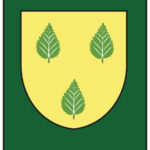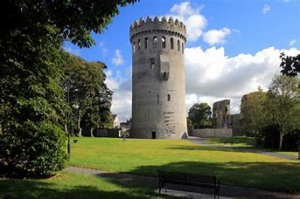 Iar Mumhan or Ormond is the ancient name of the northern part of the modern County Tipperary. Ormond comes from the Gaelic Iar Mumhan ‘East Munster’. The pre-Norman territory in both the Ormond baronies was known as Muscraige Thire, held by the O’Kennedy clan. The O’Hogan were seated here at Ardcony. An O’Donnelly sept is also cited as originating here. The O’Lonergans were driven south (toward Caher) by the Butlers in the 14th century.
Iar Mumhan or Ormond is the ancient name of the northern part of the modern County Tipperary. Ormond comes from the Gaelic Iar Mumhan ‘East Munster’. The pre-Norman territory in both the Ormond baronies was known as Muscraige Thire, held by the O’Kennedy clan. The O’Hogan were seated here at Ardcony. An O’Donnelly sept is also cited as originating here. The O’Lonergans were driven south (toward Caher) by the Butlers in the 14th century.
The Butlers became the powerful Earls of Ormonde In the Barony of Upper Ormond the O’Mearaidhe (O’Meara) clan held extensive territories and the Ui Fahy were anciently here, centered at Toomyvara. The Dalcassian Ó hÓgáin (Hogan) sept are cited here with extensive territory as Chiefs of Croich Cian. The O Cinneide (O’Kennedy) were chiefs of Glen Omra and princes of Ormond. They were of the Dalcassian septs from Clare and held their rank from the 12th to the 16th century.
Although the powerful Anglo Norman family of the Butlers who took the title of the “Earls of Ormond” and who held extensive estates in Munster and South Leinster, they never conquered the northern part of Tipperary which remained in the control of the Uí Cinnéide O’Kennedy Clan. It is more than lkely that many members of the expelled Uí Cléirigh clan took refuge in this area bounding Hy Fiacrach Aidne.
Upper Ormond
Up until the mid 17th Century the Barony of Upper Ormond corresponded to the territories controlled by the Uí Cinnéide part of the Dál Cas, although pushed back with the Norman conquest in the 13th and 14th Centuries, they in turn re-conquered much of Ormond in the 15th Century taking over most of the Norman castles including that of Nenagh.

Later though with the Tudor policy of surrender and re-grant the 10th Earl of Ormond regained these lands but astutely left the Gaelic clans on their lands albeit paying rent to the Earl.
In a study of “Ormond Freeholders in the Civil Survey of 1652” by Dermot Gleeson (Royal Antiquarian of Ireland 1936) The name O’Clery is recorded in the parish of Nenagh and he further states that”they came there from Lower Ormond where Lackaghoclere and Fiddane. O’Clery will be found mentioned in the survey and were almost certainly tenants there on the manor of Lackagh to the Butlers, as well as being freeholders in other parts of Lower Ormond”
He later states that “In the 16th century Deeds it appears that the O’Clerys of Nenagh Parish were “Sergeants ” to the Earl of Ormond for his demesne at Nenagh, and apparently enjoyed the office from father to son, and with it the use of the ” Sergeant’s Place ” in the Manor. On May 1, 1583, by a Warrant (for an abstract of which I am indebted to Dr. Curtis), Earl Thomas Duffe appointed Rory O’Clery of Nenagh to be his “Sergeant of the Manor there, ” with the Sergeant’s house and lands thereto belonging and all other freedoms and perquisites”
It is perhaps interesting to note also that there was a strong connection between the ollamh families of the MacAogáin (McEgan) of Ballymacegan in Ormond and the Uí Cléirighs of Kilbarron in Tír Connaill and is it co-incidental that there is also a Kilbarron parish in Lower Ormond!
Griffiths Valuation

As late as the 19th Century in Griffiths Valuation the largest single concentration of the Uí Cléirigh name (anglicised as Cleary for the purposes of Griffith’s Valuation Books) is in Co Tipperary, in the Barony of Lower Ormond with over one hundred and forty heads of household recorded.The biggest concentrations of the name are in the Civil parishes of Nenagh (22), Loughkeen (19), Borrisokane, Dorrha and Kilbarron with (12) each.
![]()
